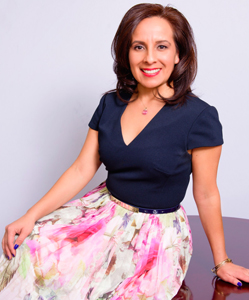Point of view is the lens the author uses to show the story to the reader. It is through this lens that the characters express their views to the reader. The writer conveys the story – letting the reader “see” and “hear” the story through a character’s perspective.
For writers, understanding the three point of views used in literature is essential. The views are first person, second person and third person. What do these points of view mean to the writer or the reader?
Writing in FIRST PERSON requires using the “I-me-my-mine-we” words. Using this point of view has benefits and drawbacks. The benefits are that the reader gets to go into the head of the narrator and really hear, touch, smell, taste and feel all the inner thoughts of a character. If you want to include something that is not in that person’s range then you must use other character’s thoughts and events to relay the information to the reader. The drawback is that the view is very limited because it is not an omniscient point of view. The reader sees the world through the limited view of this character or narrator. In addition, the writer tends to want to tell the reader everything versus showing the reader.
When writing in first person it’s important to match up your character with the right social settings, language, and mannerisms. In other words, don’t have a tough macho character describing the beautiful daisies growing by the wayside. Be cognizant of who your character is, how they think, how they feel, how they look, how they act or how they talk; clearly know your character.
In Charlotte Bronte’s novel “Jane Eyre,” the story was written in first person showing Jane’s religious and moralistic view of the world although always in conflict with her quest of being loved. The author made sure to include her inner thoughts, her upbringing and her social class as well as that of her wealthy employer Rochester. This allowed the reader insight into Jane’s inner conflict with religion and her moral code as she struggled to allow herself to fall in love with Rochester who was of higher social standing. Using the first person point of view provides the reader insight into Jane Eyre’s inner thoughts and her view of the world. Using first person point of view to tell a story, although limited, can be powerful. It is the writer’s responsibility to ensure that the reader is given additional information to accurately interpret the story. Writing in first person lends itself to private-eye and detective-type or thriller-type stories and novels.
Writing in SECOND PERSON requires using the “you-your” words. Using this point of view allows the audience to feel as if they are part of the story. This second person point of view is used for writing songs, cookbooks, letters or greeting cards and is seldom used when writing great literary works of art. Using this point of view can, however, be effective in small doses.
Writing in THIRD PERSON requires using the “he-she-it-they” words. Using this point of view is most commonly used by writers as it provides the reader with an omniscient point of view. This point of view allows the writer to choose between:
- Third person omniscient view – the reader is allowed to hear the thoughts of all the characters.
- Third person limited view – the reader can hear the thoughts of one character only.
- Third person objective view – the reader is allowed to experience the story without being told the character’s thoughts, opinions or feelings but rather is provided an unbiased point of view via the narrator. This is commonly known as the “fly on the wall” or “camera lens” approach that provides a view of observable actions only. This type of view is used mainly by newspapers and such but sometimes used in novels.
For example, in E. B. White’s novel “Charlotte’s web,” the story was told in third person emphasizing Wilbur the pig’s limited view of the world. This point of view allowed the story to be told through the many characters that were present yet focused on the circle-of-life cycle. As the story unfolded, it allowed the reader to deduct that Wilbur would eventually be caught up in the “circle of life” scenario. Using third person point of view to tell this children’s story was extremely powerful.
It is important to understand and use the point of views correctly in order to have an effective written story or novel. In the end, it is all about ensuring that the reader is not confused and that he has been given the appropriate information to follow the story. The objective is to have the reader walk away fully satisfied with what he has just read.
There are no fast rules about using more than one point of view within your story or novel except that you shouldn’t confuse the reader. If, however, you are using two different points of views, try not to mix within a chapter. If you do, make sure that these point of views are clearly obvious to your audience. The objective is to provide the point of view pattern within the first or second chapter so that your reader is not surprised thereafter. Remember that point of view can make or break a story and understanding the appropriate technique is critical to successful writing.





